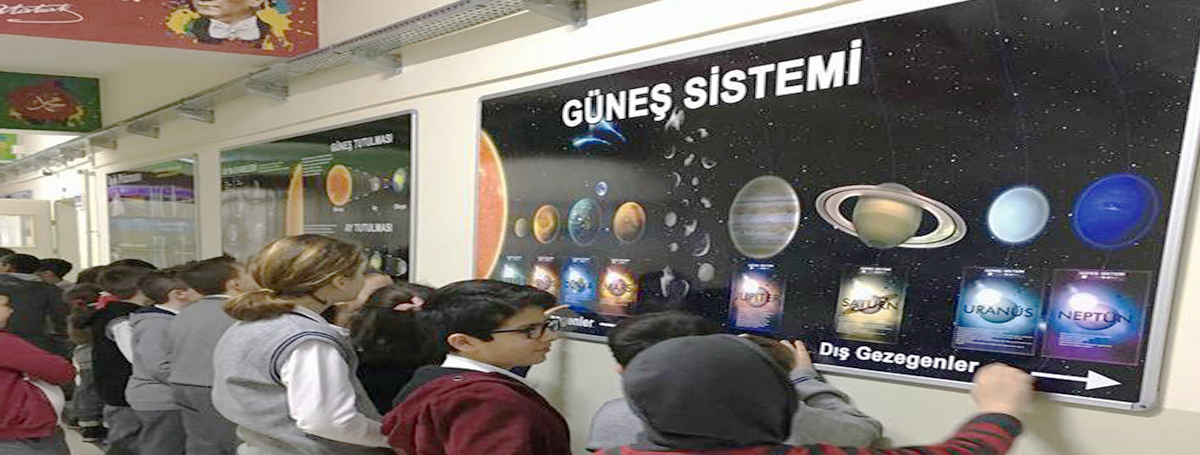
During the Ottoman Empire, a key objective of education was to raise 'good Muslims'. Thus there was a need for Islamic scholars, which was sustained through Islamic Faith Schools, called Madrasa.In 1913, the Medresetü-l Eimmeti vel Hutaba (School of ministers and preachers Medresetü-l Vaazin were integrated to form the tangible origins these days's Imam Hatip high schools
In 1924, the Tevhid-i Tedrisat (Law of Unification of Educational Direction was passed, replacing the existing, primarily sectarian educational system with a nonreligious, centralist and nationalist education one. The new law brought all universities under the control of the Ministry of National Education. A Professors of Theology at the Darülfünun (Istanbul University), unique schools for training imams and hatips (ministers and preachers) were opened by the brand-new Ministry of National Education. However, in 1930 İmam Hatip schools were closed and 1933 the Professors of Divinity was eliminated.
In contrast to the specifically secularist nature of the education policy of the Republican Individuals's Party (CHP) religious education was renewed in 1948. This included the establishment of a Faculty of Theology at the University of Ankara in 1949. Primary steps for the establishment of Imam Hatip schools began in 1951 under the Democrat Celebration federal government, which established 7 unique secondary schools (Imam Hatip Okulları). In addition, in 1959 Islamic Institutes were opened for graduates of Imam Hatip schools.
Following the coup d'etat in 1960, Imam Hatip schools came across the threat of closure. Following the return to civilian politics and the introduction of the new constitution in 1961, graduates of Imam Hatip schools might just register in university programmes if they had passed courses offered at nonreligious schools. Throughout the premiership of Süleyman Demirel nevertheless, graduates of Imam Hatip schools were provided access to university without such requirements. The 1971 Turkish coup d'état presented 2 crucial reforms: first of all junior high Imam Hatip schools were eliminated, and in 1973 Imam Hatip schools were relabelled as Imam Hatip high schools. Under the subsequent National Education Basic Law, Imam Hatip schools were defined as occupation schools, where trainees were to be trained as preachers and ministers or prepared for college.
Imam Hatip schools grew gradually at initially, but their numbers broadened quickly to 334 during the 1970s. The union federal government of 1974, established by the CHP and the MSP imam hatip kapı giydirme (National Redemption Party), committed to resume junior high schools and giving the right of entry to university through assessment. 230 new Imam Hatip high schools were opened in a period of almost 4 years. During the 1974-75 academic year the variety of trainees addressing the Imam Hatip high schools grew to 48,895. This number subsequently grew to 200,300 by 1980-81. In addition, women got the right of entry to Imam Hatip high schools in 1976. The proliferation of Imam Hatip high schools is often mentioned as the effect of the National Redemption Party's subscription of a number of unions with Nationalist Front governments.
Circumstance since 1980
The coup d'etat of September 12, 1980 is an important turning point in the history of Turkey and likewise for the history of Ä°mam-Hatip high schools. Under military governance, graduates of Imam Hatip high schools got the right of entry to all university departments. In 1985, two brand-new Imam Hatip high schools opened, one in Tunceli, despite of the so-called ethnic structure of the area, and the other in Beykoz as an Anatolian Imam Hatip High School, with the goal of contributing to the education of children of households who work abroad. Although the number of Imam Hatip high schools had not increased given that, the number of trainees participating in Imam Hatip high schools has actually increased by 45%. This is partially due to the improvement in the quality of Imam Hatip high schools and the education provided at such schools.
Throughout the education year of 1973-74, the total number of Imam Hatip students was 34,570; in 1997 this number had greatly increased to reach 511,502. Together with this enormous increase in popularity, the number of schools likewise increased. The variety of Imam Hatip junior high reached 601 and senior high schools 402. The boost in both trainee and school numbers can be credited to factors including the commitment of individuals to faith, dormitory facilities, scholarships, the admittance of women and a boost in demand for religious education.
Research study suggests that in between the years of 1993 and 2000, prospective students signed up at Imam Hatip high schools mainly to get spiritual tutoring alongside a more general education.In addition, research study reveals enrolment at Imam Hatip high schools was based solely on the student's decision. The third suggested consider the rise in appeal of Imam Hatip schools is the admission of female students in 1976. By 1998, practically 100,000 females went to Imam Hatip high schools, making up nearly half of all students. This statistic is particularly exposing due to the fact that females are not qualified to end up being either priests or ministers.
However, the introduction of eight years of compulsory education in 1997 has actually seen an abrupt decrease in the appeal of Imam Hatip schools. In 1999, the reclassification of Imam Hatip schools as "employment schools" indicated that, although more alternatives had actually been provided to graduates, obtaining locations at distinguished university courses ended up being more difficult.By needing that all eight required years of education be invested under the exact same primary-school roofing system, middle schools were abolished. Children could not go into employment schools (one of them the Imam Hatip school) until the ninth grade (instead of the 6th, as before).